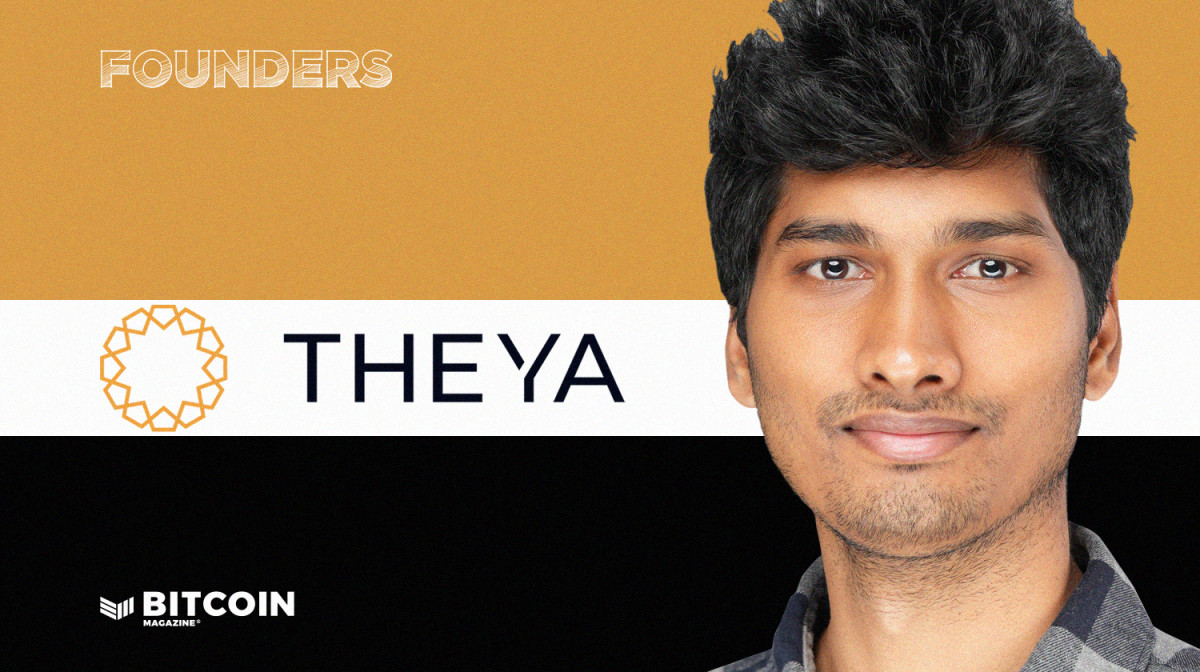Month: July 2024
Dollar falls as Fed signals likely September rate cut
Post Content
Holding Bitcoin Has Been Profitable for 98.5% of Its Existence, Data Shows
According to Bitcoin Magazine Pro data, holding Bitcoin has been profitable for 98.5% of its existence. The data reveals that out of the last 5,096 days since Bitcoin trading began, holding BTC has been profitable for 5,020 days relative to the current price of ~$66,500 per BTC.
Since August 17, 2010, when Bitcoin was priced at just $0.07, its value has skyrocketed to around $66,500, representing an astounding increase of 94,999,900%. This consistent upward trajectory highlights Bitcoin’s sustained growth and increasing adoption over time.
The chart from Bitcoin Magazine Pro underscores the aggressive growth of Bitcoin’s adoption curve, driven by its limited supply of only 21 million BTC and ever increasing demand. This growth is a critical factor for investors to understand, as it demonstrates the potential long-term benefits of holding Bitcoin. However, it also emphasizes the importance of market cycle awareness, as buying during market cycle tops can lead to extended drawdowns, historically lasting 2-3 years.
Though, this data counters the mainstream narrative that Bitcoin can be too risky for investors to buy and hold long-term. Instead, it demonstrates the significant rewards of long-term investment in Bitcoin, showcasing its use case as a reliable store of value.
For those trying to calculate where the price of Bitcoin may trend towards in the future, this indicator shows how Bitcoin’s value has accelerated as it gains global traction. As adoption and interest continue to rise, the percentage of profitable days is expected to increase and potentially surpass 99% in the future.
For more detailed information, insights, and to sign up for a free trial to access Bitcoin Magazine Pro’s data and analytics, visit the official website here.
Lightning Network In A Class Of Its Own At Bitcoin 2024 Conference
I was asked repeatedly throughout this year’s Bitcoin 2024 conference what my highlight of the moment was — what the signal was amongst the noise. As I returned from Nashville, it occurred to me that, each time, I could never answer the question satisfyingly.
In part, because I simply couldn’t keep up. The activity around the news desk and my support for those running the show left me with little time to focus on anything else. I can’t say I regret it. Anyone who gravitated around our livestream studio space during the week can attest to the energy surrounding it. The Bitcoin Magazine news desk was the veritable heartbeat of the conference.
Now that I’ve had time to collect my thoughts, I can confidently say what stood out most from the conference was the understated presence of the Lightning Network. In different times this would have been a concern but this felt different. It struck me that Lightning has not only arrived but has matured beyond what any other scaling layer can realistically claim.
Largely unnoticed, the payment protocol has quietly inserted itself into every piece of major Bitcoin infrastructure. Most of the world’s leading exchanges now support it, with some running the largest nodes on the network. The dollar-denominated capacity of the network is at an all-time high, and every operator I spoke with this week confirmed its rapidly improving reliability.
Though it might have looked to the casual conference goer that Lightning had taken a back seat to other popular up-and-coming protocols, it was clear during the conference how vastly ahead it is from the rest of the field. While I was fortunate to meet many talented individuals working on this new generation of Bitcoin technical design, I left the event with more questions about their progress than when I arrived. Lightning, on the other hand, answered many concerns about its status and the road ahead.
Sights on settlements
A recurring narrative during the event was the protocol’s promises as a settlement network. Initially promoted as a retail payment solution, Lightning’s latest and biggest headways might be among businesses and institutions looking to satisfy liquidity needs. The vision, popularized notably by Jack Mallers at Strike, feels more concrete than ever, with infrastructure company Lightspark now at the forefront of these accomplishments. Last Thursday, on the Nakamoto stage, Lightspark’s co-founder Christian Catalini argued for Lightning’s favorable position as a bridge between companies and various financial institutions:
If you think about the challenge of moving value not just between a few countries but two hundred or more countries, every day, 24/7, with deep liquidity. There is only one asset, and that asset is bitcoin. It has regulatory clarity, it has on and off-ramps in pretty much every country around the globe. Now we can connect it all in an open way.
Lightspark’s recent announcement of its partnership with Latin America’s banking giant Nubank clearly outlines the potential for existing firms to modernize their infrastructure using the Lightning network.
Further strengthening the case of Lightning as a rail to connect the global economy, last week’s release of Lightning Labs’ Taproot Asset protocol introduces yet another opportunity for the scaling layer to establish itself as the dominant value transfer protocol on the internet. Before Lightning can come for VISA, it might have to start by displacing SWIFT.
Improving payments
On the payment front, the talk of the town in Nashville was the improvement in user experience brought about by the arrival of features like BOLT12.
Years in the making, the payment protocol offers an intuitive way for users to receive Lightning payments without relying on unreliable, expiring, invoices. It also paves a promising path toward improving users’ ability to receive payments offline, a major pain point of current implementations.
Introducing #TwelveCash, a simple way to share your bitcoin payment info with the world. pic.twitter.com/tynzAVEEEt
— Stephen DeLorme (@StephenDeLorme) July 18, 2024
BOLT12 achieves this through static, reusable, offers that do not compromise receiver privacy. Combined with other innovations like DNS payment instructions, it is now possible to create human-readable Bitcoin addresses (ex: alex@twelve.cash) that support different payment formats. Imagine using a single identifier to receive on-chain and Lightning payments regardless of your preferred standards. Twelve.cash, a standout project from this year’s conference hackathon, did a remarkable job highlighting the versatility of this technology, implementing “a simple way to share your bitcoin payment info with the world.”
Other forms of human-readable addresses have existed for some time using the LNURL format but the hope is for users to converge to more mature solutions. Long-time Lightning infrastructure provider Amboss also announced during the event a new Lightning wallet supporting a novel, multi-asset, payment system they’ve called “MIBAN”.
Fragmentation between standards and compatibility issues is anticipated in open and permissionless financial systems. Lightning is further than any alternative in terms of optimizing around these interoperability challenges to ensure seamless payment experiences.
BOLT12 is currently supported by leading wallets like Phoenix and ZEUS, and could land on the Strike app soon.
Following Bitcoin Park’s Lightning Summit around the same time last year, I remember feeling pretty disillusioned about the prospects of consumer Lightning apps. What a difference a year makes. While a fully non-custodial experience might always command a premium, new optimizations, and different security models are emerging that can meet retail users where they are.
Infrastructure at scale
This progress, at every level, would not be possible without the momentous efforts that have gone into infrastructure work over the last couple of years.
Lightspark, which supports Lightning integration for other industry giants like Coinbase and Bitso, is powered by Spiral’s Lightning Development Kit (LDK). Recently announced Alby Hub is also the first production wallet deployed using the LDK node library.
Keep in mind LDK has been in the works for almost four years now. Good things take time. Many people I spoke to during the conference expect the scope and quality of projects to be deployed using this toolkit to significantly accelerate.
Another signal of the evolving Lightning infrastructure came from the release during the week of Breez LDK’s new Liquid integration. This is a trend that is picking up pace and has been pioneered by Boltz’s swapping services. Used in wallet applications like Aqua, Liquid empowers developers to use the sidechain network’s cheap fees to settle transactions in and out of Lightning into L-BTC. While this involves custody tradeoffs, proponents argue it remains a superior option to fully custodial Lightning wallets.
Also in topic during the conference was the progress made at the Lightning Service Provider (LSP) specification level. As a result, the quality of service providers on the network has significantly increased. LSPs are used to provide infrastructure support and liquidity provision to companies wanting to connect to the Lightning Network.
Zeus’s founder Evan Kaloudis shared his company’s effort in this direction:
Since the legal uncertainty in the space arose following the arrest of the Samourai Wallet developers, we’ve doubled down and now have two different services that provide users with connectivity to the Lightning Network. We’ve also massively expanded the Olympus LSP userbase; we now are not only powering the ZEUS wallet, but we’ve now got integrations in a total of four different wallets, including a role as the default LSP in Mutiny Wallet.
Security is another area of the protocol seeing impressive growth. Spiral grantee Sean Gillian’s work on Validating Lightning Signer (VLS) will play a significant role in scaling this technology to power users. Allowing operators to leverage secure enclaves to protect hot signing keys and set spending policies will be required to onboard the next wave of institutional players.
In a panel I hosted Saturday afternoon called “Lightning for Institutions”, the protocol’s co-creator Tadge Dryja expressed strong interest in the development of more secure key management processes.
We’ve worked out how you can implement multi-signature support for Lightning nodes. We have done the math, we know it works. Now we have to work with everyone to get there.
It would not be an infrastructure section without mentioning the massive innovation around the Nostr protocol and its implications for Lightning. One of my favorite Pitchday projects at the conference was Flash, a new payment gateway platform that leverages Nostr for seamless integration of Lightning into any internet services or products. The consequences of using the Nostr messaging protocol as a bridge between Bitcoin applications are not yet fully appreciated. The Flash team has an incredible vision for it. Shoutout also to Justin from Shocknet who I met and is exploring many interesting ways to scale the Lightning protocol using Nostr’s magic sauce.
It’s time to stop fading Lightning.
Post Nashville Event Recap – A Bitcoin VC Perspective The Good, The Bad, and the Bullish
Macro – Crossing the Rubicon
1. Donald J. Trump and the point of no return. 3 words, “Strategic Bitcoin Stockpile”. It was theorized by many Bitcoiners for years, some would even say dreamed of, and it happened just last week. Fair to say that Bitcoin has indeed crossed some sort of Rubicon on Saturday, a point of no return where everything can suddenly accelerate. The culprit? – goes by the name of game theory. Nations around the world, from this day forward, have to take this idea of a Bitcoin reserve seriously or face the consequences of being left behind. If enacted, the US will own around 1% of the total bitcoin supply.
From the perspective of other countries, this strategy would be tough to replicate as the US basically got this bitcoin for free (through what could most likely be considered illegal and immoral means). Competing nations would be faced with the daunting/impossible task of accumulating hundreds of thousands of bitcoins without paying a huge premium for it. This is where Bitcoin mining becomes a matter of national security. On the back of that announcement from Trump, Michael Saylor also laid out a framework for nation-state adoption of bitcoin as a treasury asset (How to do it sensibly and why it makes sense) in front of 10+ senators. A good idea whose time has come is unstoppable.
2. Institutions are here. The same game theoretics apply for institutions. If nation-states are accumulating Bitcoin, corporations must do the same. Nation-state accumulation basically guarantees price go up over the long term, which means dollar-denominated corporate treasuries will suffer in relative terms. It becomes a bright line denominating winners and losers. Moving part of the treasury into BTC won’t even necessarily make you a winner, it’ll be the baseline requirement to compete. Anyone who doesn’t do it will just be left behind. “It might make sense just to get some in case it catches on”
3. Retail is still absent. As the chart below describes, retail flow measured by the 30-day change in total transfer volume for transactions under $10K, is at a 3-year low. Despite BTC being less than 10% away from ATH.
While the conference was an inevitable success in terms of retail participation, it would appear that retail buyers are either exhausted, already all-in or not willing to buy additional BTC at those prices. Another possible explanation for this was the overall feeling throughout the conference of “waiting for the next catalyst”.
UTXO Alpha Day – The first of many for Venture Capitalists
1. We are blessed to support the best people. UTXO Management was hosting its inaugural investor day, UTXO Alpha Day, at the Bitcoin 2024 conference. We assembled hundreds of capital allocators, entrepreneurs, institutional investors, and angels for the event, where we explored yield-bearing assets in Bitcoin, the landscape of new Bitcoin layers, and the emergence of Bitcoin as the ultimate treasury asset. The event was a success and a great reminder that Venture Capital is first and foremost about exceptional individuals all competing to bring new utility to Bitcoin. BTC Startup Lab also hosted an incredible mixer event on Friday where we had the pleasure of meeting many different investors and founders. I left the event with the feeling that Bitcoin founders are a rare breed that must be welcomed by the US with open arms. Their focus is very much on building and gearing up for a Bull market – expect everything to happen all at once when Bitcoin decisively breaks its previous ATH.
One of the main takeaways from the conference was that investor appetite for Yield strategies native to Bitcoin is growing beyond what we initially anticipated. When we talk about idle capital, most people tend to think about the millions of BTC sitting in wallets, however, last week it became clear that the opportunity is equally attractive to crypto investors currently allocated on different blockchains. TVL is mercenary in the current environment and many discussions we’ve had came from investors either looking to switch from Bridged BTC (WBTC for example) on other blockchains to Bitcoin L2’s, or from investors looking for more attractive opportunities than Ethereum or Solana-based coins as the incentive campaigns of bitcoin projects often yield attractive current returns and asymmetric upside.
2. Venture Capital knowledge about Bitcoin remains limited. As it was highlighted in the most recent Galaxy report on Blockchain Venture Capital, the appetite for crypto investment has steadily increased YTD but remains nowhere near the top of Q1 2022. From the report: “In Q2 2024, venture capitalists invested $3.194bn (+28% QoQ) into crypto and blockchain-focused companies across 577 deals (-4% QoQ).”
While this is a good sign for the space, Bitcoin investments only represented 3.1% of total deal flow or $96.4M in Q2 2024 while Bitcoin market capitalization constitutes above 55% of the whole crypto market.
We believe that this trend will quickly reverse as the nature of the asymmetric opportunity that Bitcoin Defi / Infrastructure represents becomes impossible to overlook. One possible explanation for the current lag in Bitcoin VC funding is that technical knowledge of Bitcoin mechanics is not as equally distributed among VCs as it is for the rest of crypto. Bitcoin analysts are few in number and the Bitcoin space has been historically closed to VCs as the lack of programmability of Bitcoin hindered its attractiveness. We also expect this to change soon as the incentive to understand the ins and outs of Bitcoin in a less crowded market will bring additional technical talent (developers included).
3. We’ve got the Alpha. Henry Elder from UTXO highlighted during Alpha Day all the ways that traditional investors should think about deploying on-chain Bitcoin capital. Some takeaways:
BTCfi is in its infancy and can be broadly organized into 3 categories: sidechains, Layer-2 chains and metaprotocols.
Sidechains are currently much simpler to launch than true Layer 2s, so it’s no surprise that the sidechain landscape is the most developed and mature BTCfi ecosystem, as the products and tools have already been developed over the past several years on Ethereum. These ecosystems also benefit from the highly developed security auditing infrastructure that already exists for Ethereum and its associated L2s.Layer 2s: Other than Lightning Network, these products are largely still in the development stage and each implement unique and novel technical solutions to link security to Bitcoin.Bitcoin metaprotocols that use the bitcoin chain directly and are the most bitcoin-native classification. They use bitcoin-native assets and the relevant details of their operations are encoded directly into bitcoin blocks, although they must be decoded using custom indexers. Arch Network is an example of a metaprotocol that supports BTCfi applications, but Ordinals, BRC-20s, and Runes are also metaprotocols, they simply support BTCfi assets.
The only real Layer 1 option to build on in the past has been Ethereum and a few other blockchains. Bitcoin now offers an alternative that is economically more secure, credibly neutral, and potentially offers superior technological security, as well, by dint of a lower attack surface than Ethereum. Legacy projects can remove billions of dollars of annual expenses and/or inflation by moving to a proof-of-stake model using BTC or an L2 directly on top of Bitcoin, while getting better security and maintaining a high degree of technological and cultural independence.
Bitcoin L2’s – The cool kids on the block?
1. L2’s were the center of attention. With no surprise, L2’s were the talk of the town in Nashville. BitcoinOS (Grail) announced their new rollup protocol by verifying a proof directly on Bitcoin (BitVMX had done something similar just a few days earlier on testnet). Bitlayer and many others were big sponsors of the conference, often hosting some of the coolest afterparties throughout the week. All of this to say, the momentum was definitely in favor of L2s (mostly sidechains as Janusz from Bitcoin Layers would be wise to insist upon). I expect this trend to grow as these projects look to onboard more projects to their platforms in the hope of building a community moat sufficiently strong to withstand the extreme level of competition in the space. However, at 80+ and counting, it became apparent that the hype would be short lived for many. People are mostly aware of the main players in Asia and the US, but the others will remain behind the fog of war unless they bring new innovations to the table. An important moment during the conference was also Cathie Wood on the main stage talking about Bitcoin L2s with Alyse Killeen. This could be a signal that larger institutional players are thinking about coming into the space (Franklin Templeton DA also held a private event with several VC firms, including UTXO).
2. Rollup teams are at the forefront of Bitcoin research. Something that became very clear to us after meeting the teams at Alpen, Bitlayer, and Citrea is the level of technical research underway in the Bitcoin space. The paradigm shift from BitVM has catapulted some of the brightest minds in the space toward exploring the frontiers of Bitcoin script and Zero-Knowledge Proofs. The work being accomplished now will likely onboard the next million users to Bitcoin, with trust assumptions that could satisfy a majority of users.
The main takeaway from those discussions was that, although the excitement around rollups is warranted, many challenges persist. In first place, the cost of posting Data Availability to Bitcoin. While this is bullish for miners, the race is on to provide the most optimal solution while preserving the ability for users to trust the least amount of intermediaries in the process (trust-minimized solutions). Another takeaway is that those teams are preparing to release new technical documents to the public, bringing new understanding of how they are planning to design bridges for these rollups.
3. Lightning aux oubliettes (An oubliette – from the French oublier, meaning ‘to forget’ – is a basement room which is accessible only from a hatch or hole in a high ceiling). Apologies for the clickbait title, but for all intent and purposes, Lightning was effectively memory-holed from everyone during the conference as people focused all their attention on Trump and new shinier objects (sidechains). Alex B from Bitcoin Magazine raised the issue as he was speaking during Alpha Day “I don’t think I’ve heard one person mention Lightning yet”.
Forgotten maybe for a few days, but certainly not dead. Once fees spike again (this is not an if but a when) I’m certain that Lightning will be at the center of every discussion again (“Can I get some of that inbound liquidity bro”).
In any case, the Lightning space continues to grow and improve, slow and steady style. Just before the conference, Lightning Labs announced (finally) the release of Taproot Assets on Lightning. My reaction to the announcement:
Lightning-fast, trustless swaps, natively on Bitcoin (producing Yield for nodes). People always say that being too early is the same as being wrong, but in the case of Lightning I believe this is the best possible outcome for capital allocators. Sure Lightning does not have the degens, it does not have the culture, but it does have the superior token standard and network effect. Many of the people I talked to at the conference tend to oppose Runes/BRC-20s to Taproot Assets, I think they are complementary. Precisely because one has the community, and the other has the means to offer that community huge cost savings and faster transaction settlement (in a completely trustless way).
Therefore, the major takeaway for me was that investing at the intersection of Runes/Bitcoin native assets and Lightning infrastructure will become very powerful as demand will naturally flow toward these projects (Joltz and LnFi are great examples that come to mind).
Mining – Is it even mining anymore?
1. Hashprice is no longer the key to becoming a profitable miner – it’s “we’re building an AI pilot project”. It has become apparent throughout my discussions with miners and analysts alike that the only catalyst propping up miners currently has nothing to do with mining and everything to do with capital allocation. Miners are choosing to allocate resources to AI and HPC, while investors are choosing to allocate resources to miners with the most exposure to these relatively new verticals. There are a few reasons for this shift:
Post halving, miners are struggling to maintain attractive margins as transaction fees generated from Ordinals and Runes have been (so far) disappointing. This has led many to consider alternative sources of revenue, preferably something high-margin, predictable in time, and compatible with existing infrastructure. AI is the perfect fit.
Markets are also generously rewarding miners with AI exposure as the marginal effect of hashrate procuration announcements forced miners and analysts to rethink how publicly listed companies should be valued.
While this trend, in large part attributable to Core Scientific and Iris, may appear to be waning in favor of a return to sanity, many present at the conference are betting on selling their available capacity at a premium to AI/HPC companies.
Nonetheless, other catalysts for mining growth became apparent last week, including the somewhat unexpected progress in ASIC design efficiency (Bitdeer in particular targeting 5J/TH in 2025) and the return of institutional financing for miners led by Cantor Fitzgerald announcing a $2 Billion financing business expected to grow well beyond that. This is important because, unlike during the 2021 mining cycle where miners mostly relied on ASIC-backed loans to raise capital, capital markets have been closed to miners since then, forcing them to rely on highly dilutive ATM offerings. This announcement could be the turning point for miner financing during the 2025 cycle.
2. The Commoditization of Blockspace is becoming a reality. I had the chance to attend the launch party of Alkymia, hosted by Blockspace Media. For those not familiar with Alkymia, their newly released platform allows you to take a directional bet on Bitcoin transaction fees. This is the latest addition to a suite of tools allowing miners to stabilize their revenues while allowing exchanges, protocols, and traders to hedge transaction fee volatility risks. As blockspace becomes more valuable, the complexity of transacting on-chain will grow, giving an edge to specialized actors understanding the nuances of Bitcoin’s mempool.
Mempools were also a big topic of discussion last week as the additional programmability of Bitcoin and the introduction of Rollups could introduce some forms of MEV or MEVil to the protocol (more about this below). Understanding the potential of MEV on Bitcoin was a big concern and our investment in Rebar Labs has never made more sense. While we are still early in those discussions, general consensus among the people I talked to was that MEV on Bitcoin will be different from ETH, with less centralization risks and more accessible opportunities for all miners.
3. The spirit of Matt Corallo’s speech was overlooked. Being scheduled to speak right before the future president of the United States is never an easy exercise. However, Matt laid out the most fundamental principles that make Bitcoin what it is today in a brilliant way that would deserve more attention.
In particular, his framing of the blocksize wars – in front of many thousands of listeners – was spot on. This period of Bitcoin’s history was not so much about the size of blocks as it was about the process of governance – who decides the when and what of change to the code?
The beginning of an answer was found immediately after 2017 – miners and corporations do not. The post-conference euphoria that followed BTC++ earlier this year can also serve as an exemplary answer – developers/technical commentators do not. The only stakeholders left in the Bitcoin triumvirate of governance are users, and while users ultimately have to cooperate with miners and developers to cement of change of code into the blockchain, they remain the gatekeepers of unwanted change to the protocol. Bitcoin is not the code, it’s not the blockchain, it’s not even the currency – Bitcoin is a consensus among users.
So, after more than 22,000 people showed up in Nashville to learn more about Bitcoin, what did we learn from them?
Talking with some Nashville natives and international visitors, here’s what I could gather:
Change is exciting and most people have a favorable view of recent proposals supposed to bring additional functionality to Bitcoin. Most don’t understand what they could change or how they work. Educational content that is accessible to everyone is sorely lacking.UX is the number one concern that always comes up in some sort of fashion. I’m mainly deriving this from trying to orange-pill Uber drivers (I think they may hate us now!) and restaurant/bar staff. Most people know Bitcoin, have heard of it, and have bought some before. The most common thing was people holding it on mobile-focused platforms like Cash App and did not understand how to request a deposit to their address (Lava has a great wallet making Bitcoin more accessible to users). Above everything else, I think the next upgrade to Bitcoin should make it easier for people to self-custody their bitcoin – which is coincidentally what is needed for them to later interact with L2s and apps. I do believe that focusing on infrastructure investment will be paramount this cycle.
I hope you like this recap. If you are a Bitcoin Builder or an investor interested in learning more about what we do at UTXO, please reach out to us on X or directly on our website.
To end on a positive note, let’s not forget to highlight some of the hopium math presented by Michael Saylor during the conference, predicting a BTC price of $13M by 2045. You’re daily reminder that you’re probably not bullish enough.
The World’s Largest Bitcoin Conference Heads to Las Vegas in 2025
BTC Inc., the leading provider of Bitcoin-related news and events, is excited to announce that after this year’s successful Bitcoin 2024 event, which brought over 22 thousand attendees to Nashville, The Bitcoin Conference, the world’s largest and most prestigious gathering of the Bitcoin industry, will take place in Las Vegas from May 27-29, 2025. The decision to move the conference to Las Vegas underscores the organizers’ efforts to celebrate Bitcoin in one of the fastest-growing, forward-thinking, and Bitcoin-friendly cities in the world.
“We’re excited to welcome The Bitcoin Conference to Nevada in 2025,” said Joe Lombardo, Governor of Nevada. “The decision to move this historic event to Las Vegas not only highlights our state’s burgeoning position as a major financial and technological hub, but also our passion for welcoming innovators to our state.”
In addition to attending a vast array of conference panels and sessions, attendees will have the opportunity to participate in valuable networking and community building events, experience leading-edge technology showcases, and hear insights from policy leaders, business executives and celebrities across the Bitcoin industry.
“Las Vegas has experienced an incredible transformation over the last few years, establishing itself as a hub for entrepreneurship, technological innovation, and economic growth,” said David Bailey, CEO of BTC Inc. “Under the leadership of Mayor Goodman and Governor Lombardo, the city has also embraced the Bitcoin community with open arms. Accordingly, we believe that Las Vegas is a natural and obvious fit for The Bitcoin Conference, and we can’t wait to celebrate the continued acceleration of Bitcoin with the local community.”
As anticipation builds for the upcoming Bitcoin 2025 in Las Vegas, tickets are available for purchase on the official conference website. Interested individuals and organizations are encouraged to secure their spots early, as demand is expected to be unprecedented.
For sponsorship opportunities, media inquiries, or further information about The Bitcoin Conference, please contact us or visit https://b.tc/conference/2024.
About The Bitcoin Conference:
The Bitcoin Conference is the world’s largest and most influential gathering of cryptocurrency enthusiasts, professionals, and thought leaders. With a commitment to fostering Bitcoin adoption and exploring the latest developments in the industry, the conference serves as a catalyst for innovation, collaboration, and education. Founded in 2019, the conference has grown into a global phenomenon, attracting attendees from across the world.
Bitcoin Magazine is owned by BTC Inc, which also owns and operates the world’s largest Bitcoin conference, The Bitcoin Conference.
Google, Robinhood Veteran Aims To Bring Bitcoin Multsig To The Masses With Theya
Company Name: Theya
Founders: Sriram Bhargav Karnati, Smeet Bhatt and Vikas Choudhary
Date Founded: December 2023
Location of Headquarters: San Francisco, CA
Amount of Bitcoin Held in Treasury: “It’s significant.”
Number of Employees: 7
Website: https://www.theya.us/
Public or Private? Private
Sriram Bhargav Karnati believes that top-notch security and usability are not mutually exclusive when it comes to managing your bitcoin.
So, he and his co-founders at Theya have built a multsig bitcoin vault — a mechanism that requires multiple participants to sign off on a Bitcoin transaction — that users can conveniently manage from their mobile devices.
“Our mission is to make self-custody easy for everybody,” said Karnati.
“If you look at all the $1 trillion companies — all the big tech companies: Apple, Google, Facebook — they all have brilliant products that everyday people can use. But if you look at Bitcoin, you don’t have a product that’s super easy for everybody to use without having to become a security engineer or have technical expertise,” he added.
“[We] want to really make it super simple to onboard people and make long-term storage super convenient.”
Combining Karnati’s background in building consumer products for major companies like Google and Robinhood with his deep understanding of Bitcoin, it seems there’s perhaps no better person for the job of bringing multisig Bitcoin vaults to the masses.
A Silicon Valley All-Star Shifts To Bitcoin
Growing up in Bombay, Karnati dreamed of working in Silicon Valley.
He got the opportunity in 2014 when he began working at Google, where he contributed to a number of the company’s products.
“At Google, I didn’t work on just one team,” recounted Karnati.
“I touched almost all products that you use: Google Search, Google Shopping, Google Ads — everything,” he added.
“My biggest lesson from that was ‘How do you build the system from the ground up and scale it to billions of users?’ And also ‘How do people think about using a product?’”
By 2021, Karnati found himself at another prominent Bay Area-based tech company, Robinhood.
At Robinhood, Karnati learned about the intersection of money, finance and technology, paying close attention to what the company got right when it came to user experience.
“When I worked at Robinhood, one of my biggest lessons was ‘How do you take complex financial instruments and make them super simple?’” explained Karnati. “[We were] basically giving access to everybody to join finance.”
Karnati has taken these lessons he learned in Silicon Valley and is now applying them to Bitcoin self-custody.
He knows that if Bitcoin is going to scale the way it was intended to — with users holding bitcoin in self-custody — then it has to become easier to use a non-custodial bitcoin wallet or vault.
Enter Theya — dynamic and secure solution to bitcoin self-custody.
How Theya Works
Theya’s vaults employ a 2-of-3 multsig setup, which means that two of the three private key holders have to sign off on sending bitcoin from the vault for the transaction to occur. Theya holds one of the keys while the user(s) hold the other two.
What’s unique about Theya is that its first multisig solution that doesn’t require the use of a hardware wallet — devices that Karnati believes are intimidating to newer bitcoin users.
“Mobile multisig is for people who don’t have a hardware wallet, but still want to do self-custody with more than a single-sig [device],” explained Karnati.
“You can create a family wallet with you and your spouse. That type of product didn’t exist before Theya,” he added.
“[They can] get started with multisig, and, as they accumulate more and more bitcoin, they can slowly upgrade to a hardware wallet and create a cold storage [setup].”
For this service, Theya charges an annual fee of $199.
That said, Karnati and the team at Theya are aware that not everyone is going to opt for a multisig setup right away, especially one that comes with a price tag attached.
Given Theya’s mission to onboard as many people to self-custody as possible, Karnati explained that Theya provides a free non-custodial wallet option, as well.
“The single-sig mobile wallet is free,” he said, “and you can create as many wallets as you want.”
Karnati added that the free single-sig offering is also compatible with hardware wallets. For example, you can use the Theya app as an interface for any of the hardware wallets it supports — including Ledger, Trezor, ColdCard and Foundation devices.
But who would invest in a company that gives part of its product away for free in efforts to fulfill its mission?
One of the most prominent venture capital (VC) firms in the broader crypto and tech space — Y Combinator — that’s who.
Why Y Combinator?
To get Theya off the ground, Karnati and his co-founders accepted funding from Y Combinator, well-known for helping to financially accelerate startups in the broader crypto space — startups that often issue their own crypto tokens — as opposed to Bitcoin-only startups.
So what piqued Y Combinator’s interest in Theya?
“Y Combinator doesn’t really invest based on the idea,” said Karnati. “They invest based on the founder’s background.”
Given that Theya’s two other founders — Smeet Bhatt and Vikas Choudary — also have impressive résumés and extensive experience working in tech, logistics and finance, it isn’t hard to imagine why Y Combinator was interested.
However, Y Combinator appreciated more than just the backgrounds of Theya’s founders.
“They also love our mission,” said Karnati.
“There’s a clear space for us to build. Everybody wants to make quick money. Everybody wants to create a token and stuff like that, and they thought ‘These guys are doing something different and filling a gap where you don’t really have big products,’” he added.
Karnati’s Bitcoin Conviction
Considering that Karnati has the chops as a developer to work for seemingly any technology company, one has to ask: Why focus on Bitcoin?
“I read Satoshi’s whitepaper in 2014 and kind of understood it,” Karnati recalled. “Then, I read Andreas’ Mastering Bitcoin to understand better how it works.”
But it wasn’t Karnati’s theoretical grasp on Bitcoin that made him a believer.
“Then, I bought a little bit of Bitcoin and made a transaction on-chain,” he said.
“That’s when I was like, ‘Wow, like this is real.’ I was able to move my own money permissionlessly. It was so obvious that this has to be the future of money,” he added.
When Karnati juxtaposed this experience in transacting with bitcoin with his experience in sending international remittances from South Korea, where he lived while working for Samsung, to India he experienced one of Bitcoin’s main value propositions — cheap and fast remittances.
“There was a lot of KYC, a lot of verification and it was super slow,” said Karnati of the process of sending a remittance payment via the traditional financial rails. “Sometimes there were some failures, as well, and it was very costly — there was a 1.5% fee on top of foreign exchange fees.”
After this experience, Karnati also learned about and experimented with other blockchains, only to come back to Bitcoin once he became more fully aware of one of bitcoin’s other main attributes — a store of value.
“I realized the most important thing is the store of value,” said Karnati regarding what separates bitcoin from other digital assets.
This is part of what prompted him to create a product that made storing the private keys to that store of value easier and safer.
What’s Next For Theya?
Aside from providing users with a premier multisig vault experience, Karnati and the team at Theya have further aspirations for their app.
“Payments is definitely an area into which we want to grow,” said Karnati. “We want to make it easy for merchants to accept payments and for someone to offer a subscription service.”
However, he added that integrating Lightning isn’t next on the docket for Theya.
Karnati and his team are more intent right now on introducing an exchange into the app so that users can purchase bitcoin within the app and send it directly to cold storage. Part of his motivation for including such a feature comes from taking note of the shortcomings of other Bitcoin and crypto exchanges in the space, including one for which he used to work — Robinhood.
“Some of our users have a Coinbase or Robinhood account,” explained Karnati.
“[These platforms] have limits to withdrawals, which is a hassle for [users]. With what we’re making, you can buy directly to the self-custodial vault,” he added, proving the point that convenience and top-notch security can co-exist in one app.
Column-Asian FX at crossroads as yen, yuan diverge: McGeever
Post Content
Japan spent $36.8 billion in July intervention, official data shows
Post Content
Dollar slips ahead of Fed decision; yen soars after BOJ hike
Post Content
Asia FX firms with Fed on tap; Japanese yen volatile after BOJ
Post Content









